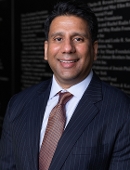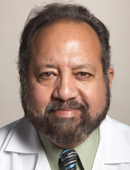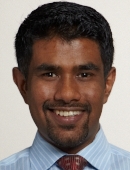Helmsley Center for Electrophysiology at The Mount Sinai Hospital
The Helmsley Center for Electrophysiology, located at The Mount Sinai Hospital, provides the full spectrum of advanced therapies for arrhythmias and heart rhythm disorders. Under the experienced direction of Vivek Y. Reddy, MD, The Leona M. and Harry B. Helmsley Charitable Trust Professor of Medicine in Cardiac Electrophysiology, our specialists are highly skilled in procedures ranging from the implantation of devices for regulating heart rhythms (such as pacemakers) to using catheters for fixing the source of the abnormal heartbeat (called ablations).
The Center was inaugurated in 1984 as the first established electrophysiology center and laboratory in New York City, and it has been leading the development of new arrhythmia technologies ever since.
Patient Care
Nationally known for our work in atrial fibrillation, we provide the full range of therapies for all types of arrhythmias and heart rhythm disorders, including the following.
- Catheter ablation: In this type of procedure, a long catheter is threaded from the groin through veins or arteries to the source of the abnormal signal in the heart, where it delivers a precise amount of energy to scar the problematic tissue and therefore contain its impulses. This procedure can be done using radiofrequency signals, a laser, or very cold temperatures (called cryoablation).
- Left atrial appendage closure: Our Center is widely recognized for our experience with left atrial occlusive procedures intended to prevent stroke. With this technique, a catheter is threaded to the heart in order to isolate the left atrial appendage, where clots often form, with the goal of preventing the clots from traveling to the circulatory system.
- Renal artery sympathetic denervation with radiofrequency energy for the treatment of high blood pressure: This minimally invasive procedure uses a catheter to deliver radiofrequency energy to nerves in the renal (meaning related to the kidneys) arteries in order to decrease blood pressure. It is typically performed when medications to lower blood pressure haven’t worked well enough.
In addition, we offer techniques dealing with the lining of the heart, such as epicardial mapping, as well as epicardial and endocardial ablation for the treatment of a type of heart rhythm disorder called ventricular tachyarrhythmia. Our team is also experienced in the implantation of defibrillators intended to prevent sudden cardiac death.
Research
We continue our pioneering leadership in the field of electrophysiology and arrhythmia care by serving as lead investigators on several multinational clinical trials exploring new arrhythmia procedures, which means our patients have access to the most advanced treatments.
We were the first in the country to use several breakthrough technologies, including a visually guided laser balloon catheter in 2009, the TactiCath force-sensing catheter in 2011, and a new generation of visually guided catheter in 2012. Dr. Reddy was the first physician in the world to use several new ablation techniques, such as the cryoballoon catheter and robotic navigation. In addition, in 2014 Dr. Reddy implanted inside a patient's heart the first, innovative, miniature-sized leadless pacemaker in the United States.
A pioneer in risk stratification for sudden cardiac death, The Helmsley Center was the first in the country to recommend use of implantable defibrillators in Sarcoid heart disease, the first to use a LARIAT Suture Device to occlude the left atrial appendage, and the first to use Laser (Cardiofocus) for pulmonary vein isolation for ablation of atrial fibrillation.
The specialists of The Helmsley Center are pleased to put this research to work for our patients, giving each person the individualized attention necessary to restore your heart to the best possible health.




